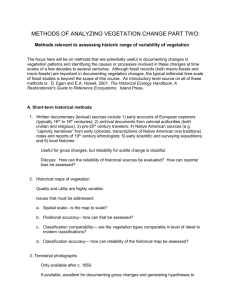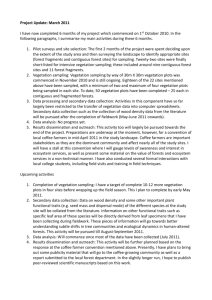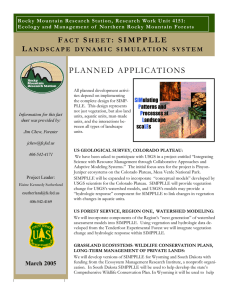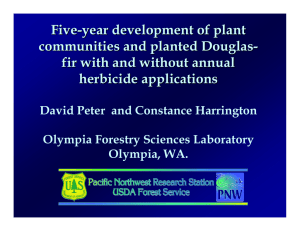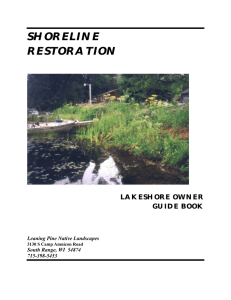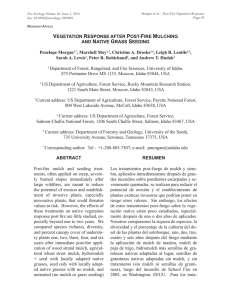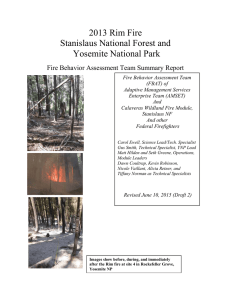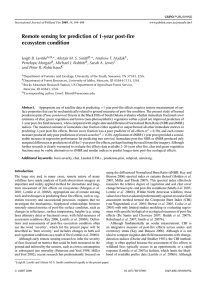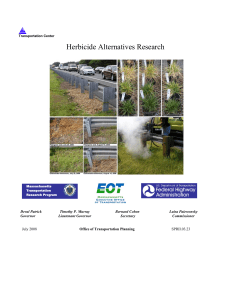ECOLOGICAL IMPACTS OF INVASIVE SPECIES AFTER FIRE
advertisement
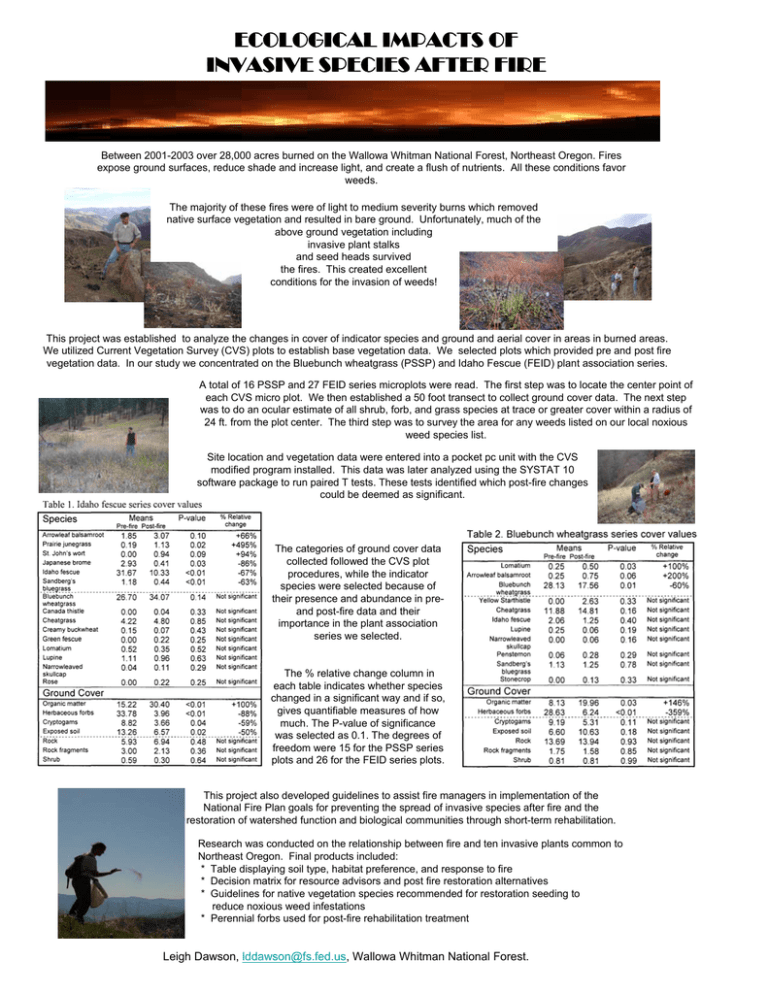
ECOLOGICAL IMPACTS OF INVASIVE SPECIES AFTER FIRE Between 2001-2003 over 28,000 acres burned on the Wallowa Whitman National Forest, Northeast Oregon. Fires expose ground surfaces, reduce shade and increase light, and create a flush of nutrients. All these conditions favor weeds. The majority of these fires were of light to medium severity burns which removed native surface vegetation and resulted in bare ground. Unfortunately, much of the above ground vegetation including invasive plant stalks and seed heads survived the fires. This created excellent conditions for the invasion of weeds! This project was established to analyze the changes in cover of indicator species and ground and aerial cover in areas in burned areas. We utilized Current Vegetation Survey (CVS) plots to establish base vegetation data. We selected plots which provided pre and post fire vegetation data. In our study we concentrated on the Bluebunch wheatgrass (PSSP) and Idaho Fescue (FEID) plant association series. A total of 16 PSSP and 27 FEID series microplots were read. The first step was to locate the center point of each CVS micro plot. We then established a 50 foot transect to collect ground cover data. The next step was to do an ocular estimate of all shrub, forb, and grass species at trace or greater cover within a radius of 24 ft. from the plot center. The third step was to survey the area for any weeds listed on our local noxious weed species list. Site location and vegetation data were entered into a pocket pc unit with the CVS modified program installed. This data was later analyzed using the SYSTAT 10 software package to run paired T tests. These tests identified which post-fire changes could be deemed as significant. The categories of ground cover data collected followed the CVS plot procedures, while the indicator species were selected because of their presence and abundance in preand post-fire data and their importance in the plant association series we selected. The % relative change column in each table indicates whether species changed in a significant way and if so, gives quantifiable measures of how much. The P-value of significance was selected as 0.1. The degrees of freedom were 15 for the PSSP series plots and 26 for the FEID series plots. This project also developed guidelines to assist fire managers in implementation of the National Fire Plan goals for preventing the spread of invasive species after fire and the restoration of watershed function and biological communities through short-term rehabilitation. Research was conducted on the relationship between fire and ten invasive plants common to Northeast Oregon. Final products included: * Table displaying soil type, habitat preference, and response to fire * Decision matrix for resource advisors and post fire restoration alternatives * Guidelines for native vegetation species recommended for restoration seeding to reduce noxious weed infestations * Perennial forbs used for post-fire rehabilitation treatment Leigh Dawson, lddawson@fs.fed.us, Wallowa Whitman National Forest.




